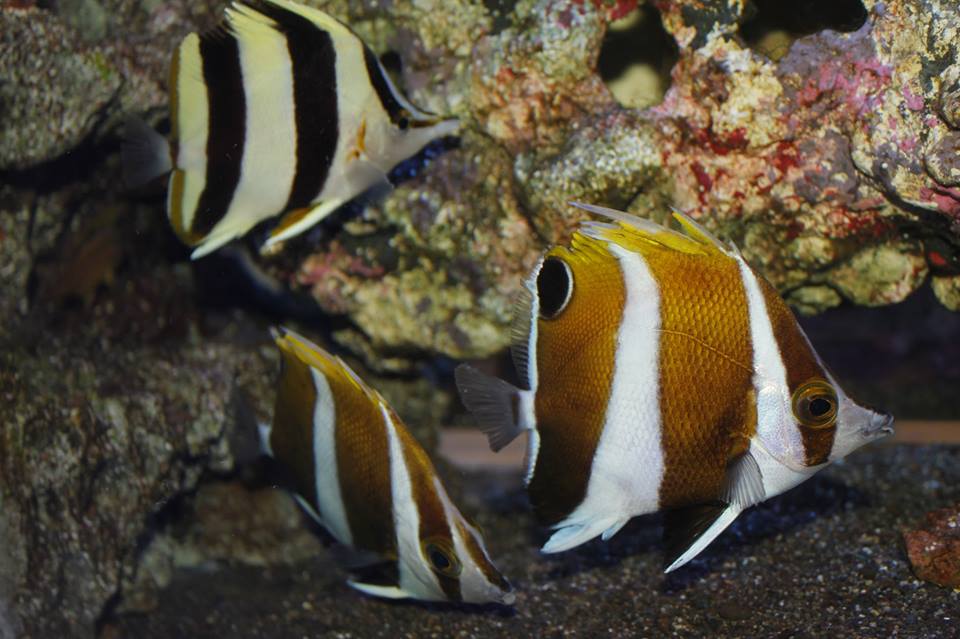The recent expedition by Rufus Kimura into the Hawiian depths yielded some amazing fish. We’re glad to receive some good updates from BlueHarbor on the health and current status of these fish. The most unnerving part of all this is waiting to see if the fish develop any post collection problems that we so often see in these deepwater fish. Decompression issues are the most common cause of concern and so far, the fishes are looking fine.
The ultra sensitive butterflies shown above are doing great so far. While it may be still early to tell, they look to be in excellent condition and this will definitely go a long way in helping them acclimate to captive life. These are not your usual butterflies for sure. Roa excelsa is one of three in its genus, the other two being Roa modesta and Roa jayakari.
Of the lot, Roa modesta is most ‘commonly’ seen in the trade and hails from shallower waters in Japan. Now although related, R. excelsa is immediately at first look a much more beautiful and amazing species. The tapering, bone-white bands and the rich golden caramel coloration is incomparable. The unique elongated third dorsal spine also separates it from the others in the genus.

The other butterflyfish species, Prognathodes basabei, are doing fine as well. The juvenile is especially rare, but this isn’t the first juvenile to hit the aquariums of BlueHarbor. It has been pointed out to us that P. basabei is not a scientifically accurate name for this species, and indeed, the term “basabei” is used more often in the trade.
Prognathodes basabei is one of a few closely related complex species involving P. guezei, and the un-identified butterfly seen in this video where Richard Pyle, Brian Greene and John Earle were collecting deepwater fish in Palau (seen swimming with Chromis abyssus and Centropyge abei). In a paper published by Richard Pyle, P. “basabei” is compared with the nearly identical P. guezei.
Whether or not these three fish are conspecific remains unclear to us for now. What we do know though, is that these “basabei-guezei” complex Prognathodes all bear a black and white striped pattern, completely different from their Atlantic Ocean counterparts. Two separate complexes of fish in the same genus, found oceans apart from each other, but showing similar patterns in their own respective areas. Evolution and speciation at its finest.

A teaser photograph of the very rare Liopropoma aurora was also released, showing the gorgeous salmon head and the labyrinth of yellow spots and stripes that decorate it. This big basslet is gorgeous for sure, and while most Liopropoma are known for their ease in getting decompression sickness, this one shows no signs of it for now. We hope that it will start to come out and flaunt its beauty for more pictures of the whole fish. We would like to thank Koji Wada and Rufus Kimura for the shipment and photos of these lovely fish, and also Joe of Old Town Aquarium for the interesting insights on P. basabei and P. guezei.



